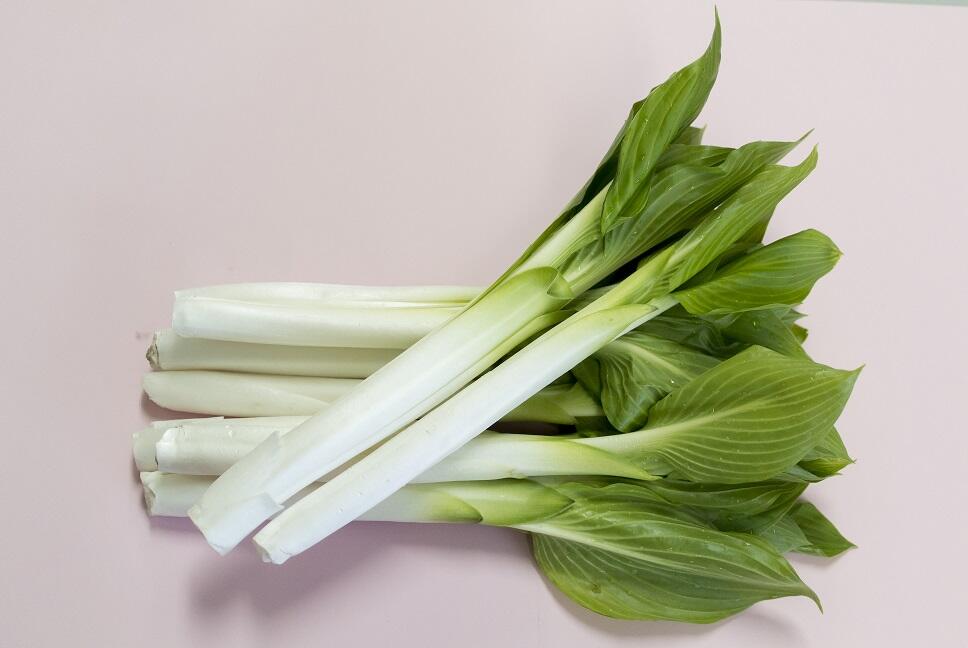Ozasa Urui
| Registration Number | 76 |
|---|---|
| Name of the GI | Ozasa Urui |
| Class | Vegetables/ Cereal grains/Pulses |
| Date of Protection | 2019/03/20 |
| Producing Area |
Yamagata Prefecture
Azuma District and part of Honjo District in Kaminoyama City |
| Applicant - Name and Address | Yamagata Agricultural Cooperative 1-12-35 Hatago Town, Yamagata City, Yamagata Prefecture |
Producing Area
Ozasa Urui is a variety of urui (hosta) (1) with unique crisp texture, and, when cooked, it puts out mucilaginous component like mulukhiya. Its white stem, which is used for food, is approximately 20% longer than that of common urui.
Ozasa Urui is highly recognized in the market for its shiny, bright-colored appearance and superior flavor, traded at a higher price than other urui.
For the production of Ozasa Urui, seedlings are multiplied by separating from mother plants of variety Ozasa Urui (Kaminoyama strain) cultivated in Azuma District and parts of Kaminoyama City in Yamagata Prefecture. Thereafter, the seedlings are also grown in the above-mentioned areas of production.
Shipment standards require that urui have no damage from diseases and pests and that the total stem and leaf length be 25 cm or longer.
Cultivation of Ozasa Urui started in the early 1890s when a farmer in Kaminoyama City brought home urui plants from clumps growing in the mountains in the Azuma area of the City and planted them for personal consumption.
The producing area of Ozasa Urui has well drained, moderately cohesive, and deeply plowed soil containing volcanic ash. This makes the area suitable for growing urui.
Producers in the area have built a consensus among themselves to not take the urui plants out of the producing area. Therefore, the production of Ozasa Urui is still limited to this area today.
From around 1945, producers began to sell their urui, which had been grown as a subsistence crop until then, to customers such as fruit and vegetable shops. Full-scale market shipment started around 1980, leading to establishment of the product on the market under the name of Ozasa Urui.
The annual production is 7 tons and the total growing area is approximately 1.3 ha as of 2018.
- Urui: Young leaves of a species of hosta named obagiboshi is referred to as urui, which has been traditionally eaten in Japan as a sansai, or edible wild vegetable. The tender petioles are cut from the root, parboiled, and then chopped to be prepared as ohitashi (with dashi dressing), or can be eaten as gomaae (with sesame dressing), sunomono (with vinegar dressing) and tempura or used in miso soup and simmered dishes.


